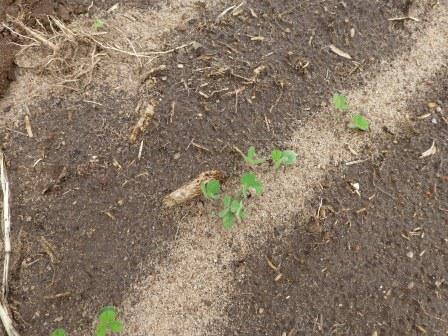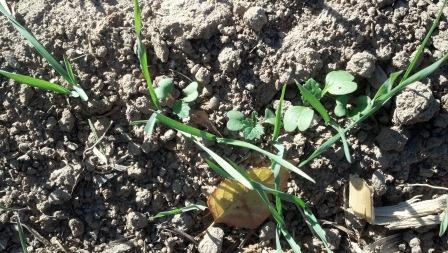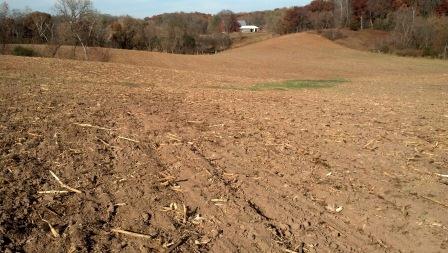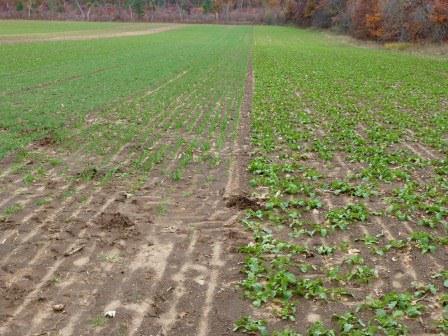Can you still gain value in a cover crop when it is planted after wheat in a dry year?
During the week of October 15, 2012 I traveled a wide swath of Wisconsin looking at cover crops. In the eastern half of the state the cover crops looked very good. In the western half the cover crops looked desperately poor. The difference? Moisture.
Northwestern Wisconsin – Terribly Dry
While on farms near Osceola, WI (right along the St. Croix River – the river that forms the border between Wisconsin and Minnesota in that part of the state), I observed a sad sight. Cover crops that had been in the ground for 6 weeks were either not germinated or had little growth. While the early part of the growing season had more than adequate rainfall and corn yields were near 200 bu/acre, the last 7-8 weeks has seen less than 1/2″ and the cover crops look…well, they look horrible.
Central Sands Region – Dry But with Some Promise
Near Hancock, in the Central Sands Region of Wisconsin, there is a mixed bag of results.
Where farmers used irrigation to “water -up” the cover crops, there are nice stands with adequate growth to have a “successful” cover crop to achieve many benefits. Unfortunately, where there was no irrigation used there was much less “success.”
Again, it was dry for several weeks before and after the cover crops were planted after the wheat crop had been harvested. A few days before my cover crop field day there was a 4 inch rain. The farmer and dealer present said that the plot “changed overnight” as it had grown so much since there was some moisture.
The beautiful thing about the cover crops in the central sands is that they established and actually looked amazingly good compared to what I envisioned they would. The winter cereal rye was tillered nicely and the oats were 5-6 inches tall. The radishes, oats,and rye all drilled through the compaction zone that we found at 3-4 inches deep.
What was not apparently impressive was the crimson clover or Austrian winter peas – at least not for coverage or height. The crimson clover was only about 1 inch tall and the peas were 3-4 inches tall. However, what was surprising was how many nodules were on the clover and peas and that the roots were 4-5″ deep and through the compaction zone as well!
Northeastern Wisconsin – What a Difference Moisture Makes




